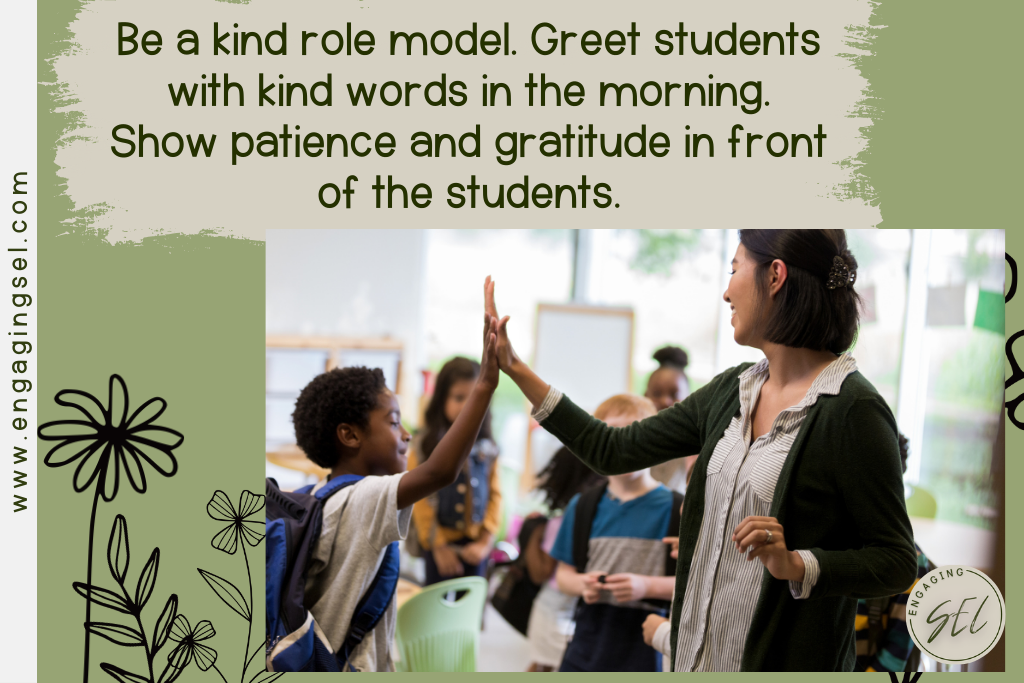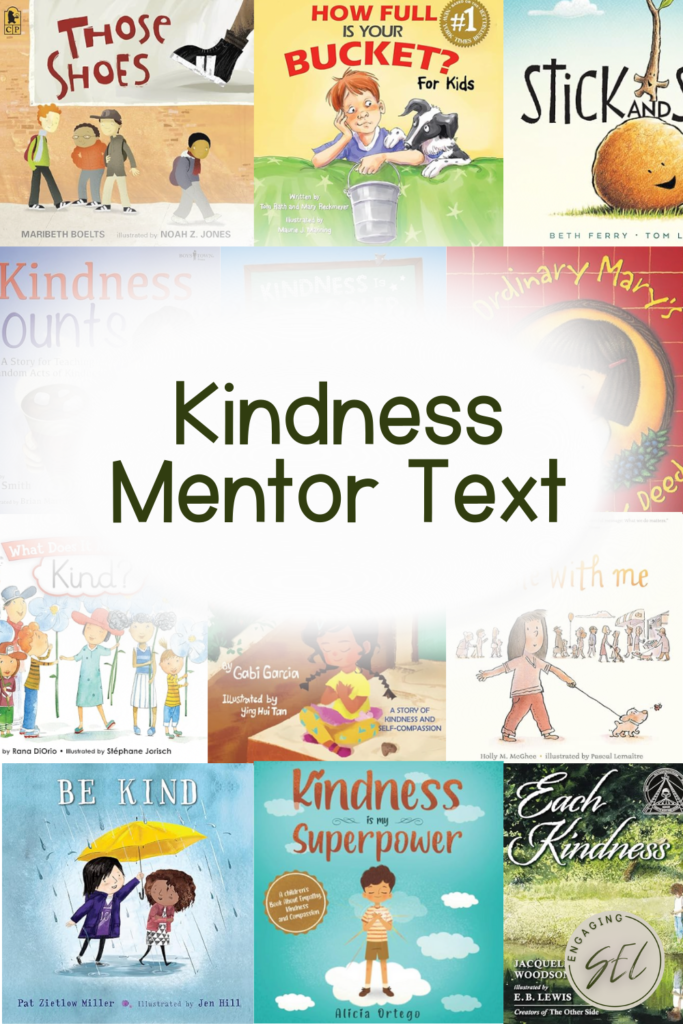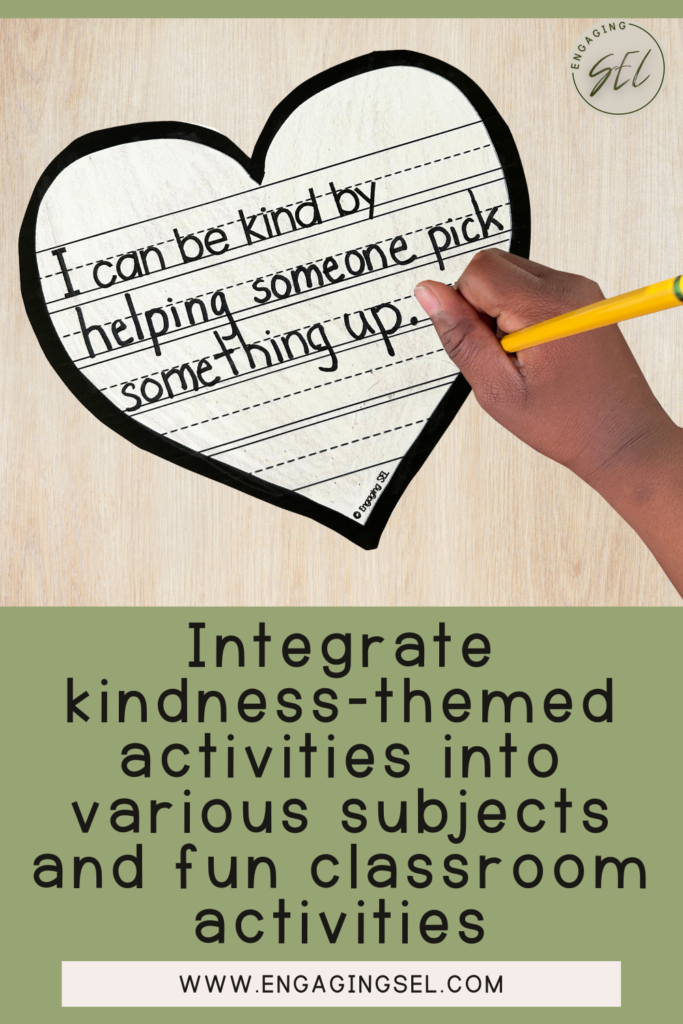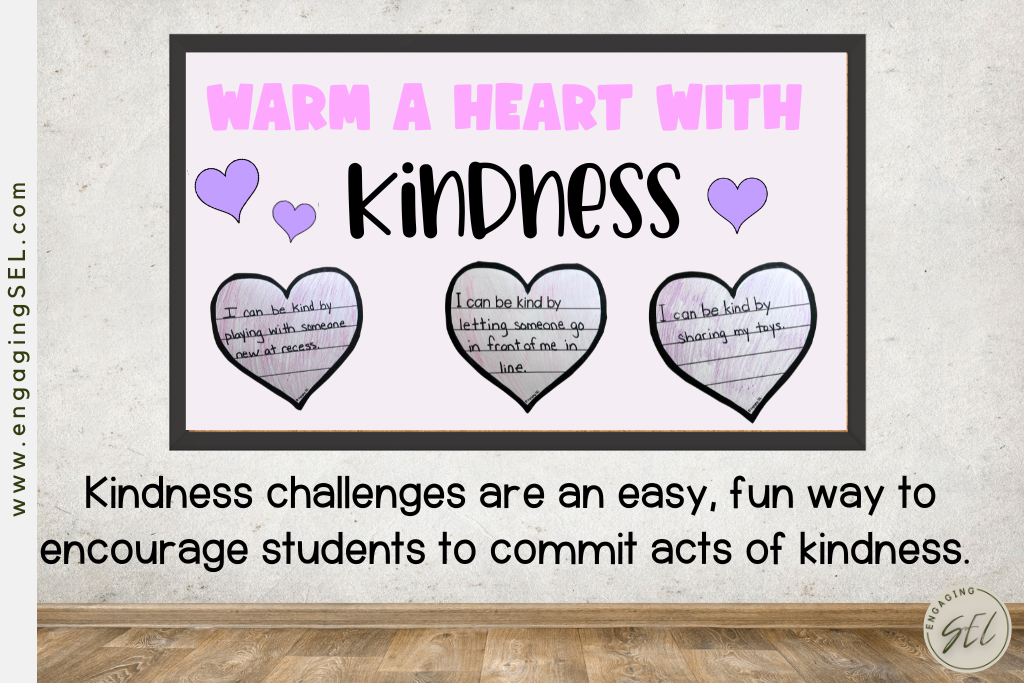
Kindness is a value that is essential in the lives of young students and the classroom community. In the elementary classroom, kindness must be taught explicitly to instill the values of compassion, empathy, and generosity. Teaching kindness to young students is essential to nurturing empathetic, supportive, and emotionally intelligent individuals. In this blog post, I will share some effective strategies for teaching kindness in the elementary classroom and how to encourage your students to be kind.
1. Lead By Example
Students learn by watching others and imitating their actions. As a teacher, you are already a role model and a figure of authority in children’s lives. What better way to teach kindness than by showing students what it looks like every day? Teachers can model kindness in the classroom by doing acts of kindness for others, choosing their words with kindness, and commenting when others treat them with kindness. Greet students with kind words in the morning, demonstrate patience and gratitude in front of the students, and have students “catch” you doing acts of kindness for students and staff. Students will learn quickly from your examples how to be kind to others.

2. Explicitly Teach the Value of Kindness
Mentor Texts
There are so many wonderful read-alouds that demonstrate acts of kindness and the value of being kind. Incorporate stories highlighting the importance of empathy, cooperation, and a sense of social responsibility into your curriculum. Discuss the character’s thoughts, feelings, actions, and impact of being kind to others. Foster discussions around the character’s motivation and behaviors to help students internalize the importance of threatening others with kindness. For ideas on which read-aloud to use, click this link for a list of my favorite Kindness Mentor Text List for Elementary Students.

Classroom Lessons
Introduce activities highlighting the importance of empathy, cooperation, and social responsibility. Social stories would be a great way to teach the idea of kindness. Have students complete a sort of kind or not kind act and explain their reasoning. Have students practice identifying acts of kindness from a read-aloud. Lead student discussions while emphasizing the characters’ actions and the positive outcomes of their kind deeds. Encourage students to notice and share acts of kindness they witness or experience. Integrate kindness-themed activities into various subjects, reinforcing the value of compassion throughout the school year.

3. Integrate Kindness into the Class Community
Include kindness as a part of your classroom rules. Discuss the value of treating others with respect and compassion in the classroom. Foster a sense of community in the classroom. Empower students to take ownership of their behavior and celebrate acts of kindness in the classroom. You can include a kindness jar, a compliment jar or shout-outs to tie in kindness as part of your daily routine. Facilitate discussions about kindness, students’ emotions, and the impact of actions on others. Incorporate kindness into your morning or afternoon meetings by having students share kind acts that happened to them or the kind acts they did for others.
Kindness Challenges
Kindness challenges are an easy, fun way to encourage students to commit acts of kindness. They can also promote teamwork and cooperation and support a kind, caring classroom community. Kindness challenges can be completed as a class or individual student. My favorite way to do a kindness challenge is by having my students complete a Kindness Bingo Board. I’ve had the students work together by completing one kind task a day. When students complete 5 in a row, we earn a class prize. I pull a kind act of the day at random so it is always a surprise what they will be challenged to do that day. Kindness calendars or kindness choice boards are another way to incorporate the idea of a kindness challenge without the prize aspect. For an example of a kindness challenge, click here.

4. Kindness Pledge
Help students make a commitment to themselves and others by signing a kindness pledge. Younger students can learn a kindness pledge and recite it like the one seen here. Older students would be able to sign a pledge promising to be kind to others. The Be Kind People project has a kindness pledge students can sign to have students intentionally be kind to others through their words and actions. This pledge can be displayed in the classroom or halls of the school as a daily reminder to students of their promise to be kind.
5. Collaborate With Families
Families are an integral part of students’ lives and should be involved in the discussions about kindness in the classroom. Share resources and activities parents can do at home with their children to reinforce your kindness lessons. Establish an open line of communication between the staff and student’s families and have the parents share kind acts that are happening outside the classroom. Celebrate the kind acts that students do with families to demonstrate that kindness can happen anywhere at any time.
Teaching kindness is the foundation for the development of compassionate, socially aware individuals. This is not just something to leave to chance and hope students pick up along the way. Explicit instruction on the value of kindness and how to be kind to others is necessary for students to develop this skill. I hope you found some value in this blog post and can start incorporating these ideas into your Social-Emotional Learning lessons.
Mindfully yours,
Alyssa from Engaging SEL

